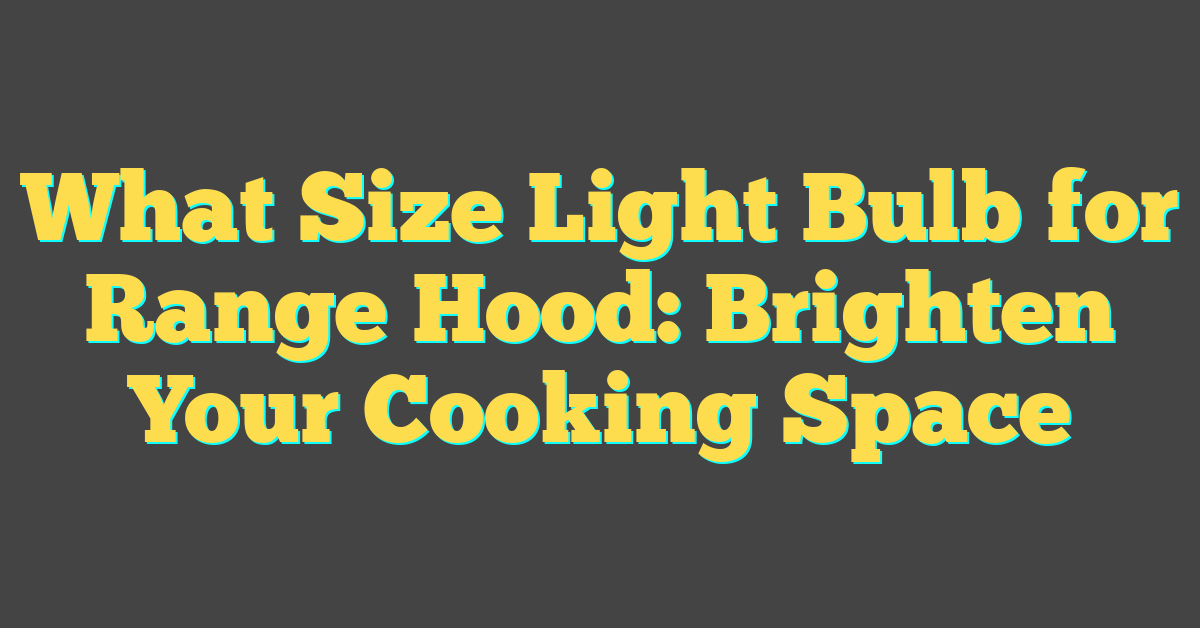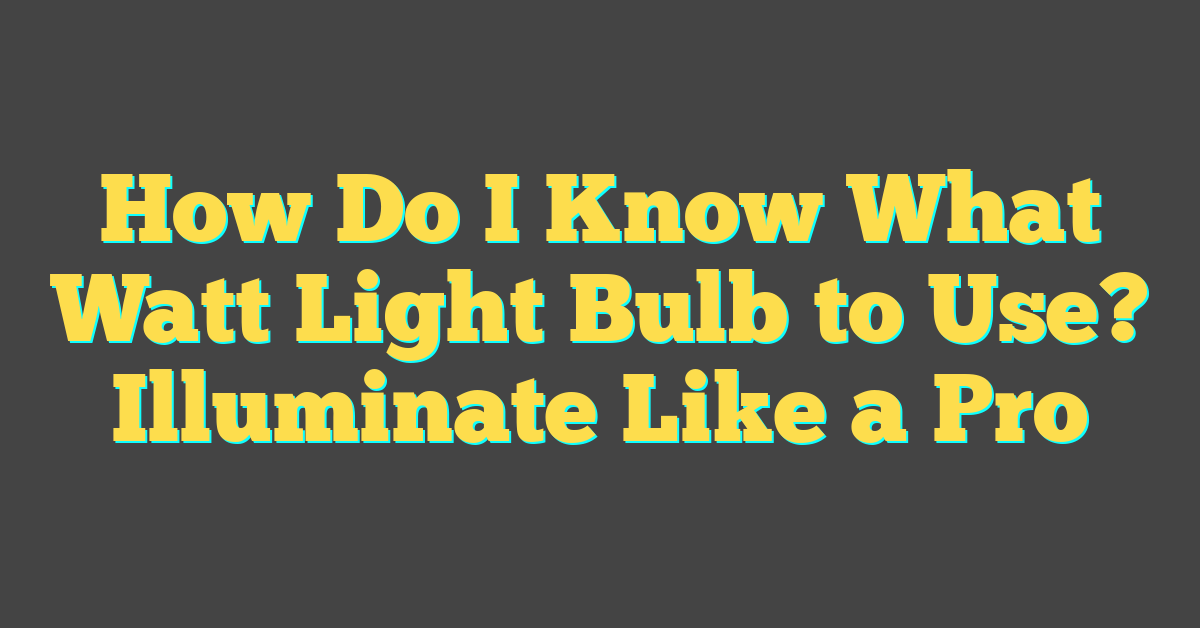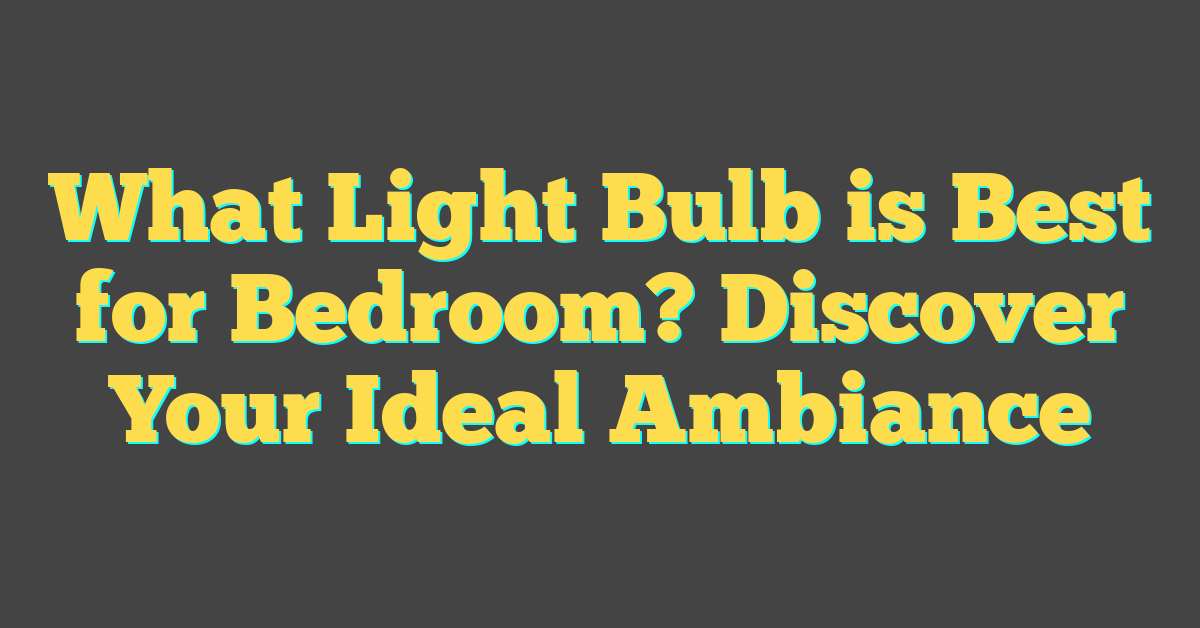Ever found yourself squinting over the stove, wishing for a clearer view of your culinary masterpiece? The right light bulb in your range hood can make all the difference. But with so many types and sizes, how do you choose the perfect one?

You’re not alone in this quest for the perfect kitchen lighting. Selecting the ideal light bulb for your range hood isn’t just about brightness; it’s about creating the ambiance that complements your kitchen’s vibe. Let’s shed some light on the matter, shall we?
Types of light bulbs for range hoods
When you’re peering into the varied world of range hood light bulbs, you’ll find that you’ve got several types to choose from. Each one brings its own set of features, pros, and cons to the table. Understanding the differences can ensure that you select the bulb that not only illuminates but also adds an accent to your kitchen theatrics.
Halogen Bulbs are one of the more common options for range hoods. They’re loved for their crisp, bright light, which can be a boon when you’re focusing on preparing those picture-perfect dishes. But keep in mind, they tend to run a bit hotter and might not be as energy-efficient as some of their modern counterparts.
Moving on to LED Bulbs, you’ll find that they’re the rock stars of energy efficiency. They remain cool to the touch and have an impressive lifespan, making them a favorite in many contemporary kitchens. With a wide range of color temperatures available, they give you the flexibility to set just the right mood.
If you’re aiming for a vibe that’s both functional and warm, Incandescent Bulbs could be your go-to. These classics have a softer glow that many find comforting, though they’re not as energy-efficient as LEDs and might need more frequent replacing.
For those of you who like to stick with tradition, there are also Specialty Range Hood Bulbs. These are specifically designed for the task at hand and often fit certain models and makes like a glove. They usually mimic the characteristics of halogen or incandescent bulbs but are tailored for the unique demands of range hoods.
Lastly, Compact Fluorescent Lamps (CFLs) offer yet another option. Though they’ve lost some limelight to LEDs, CFLs can be a cost-effective alternative that balances brightness with better energy consumption than incandescent bulbs.
Before you make your pick, consider the following points:
- Brightness: Measured in lumens, ensure it’s sufficient for your cooking needs.
- Energy Consumption: LEDs win, but CFLs and halogens are also worthy options.
- Color Temperature: Ranging from warm to cool, select what suits your kitchen’s ambiance.
- Durability: LEDs usually outlast other types, meaning less frequent changes.
Factors to consider when choosing a light bulb size

When you’re on the hunt for the perfect light bulb for your range hood, size does matter. The size of the light bulb you choose affects not just the aesthetics of your kitchen but also the functionality of your range hood lighting. Here are some critical factors to consider:
Wattage Compatibility: Your range hood is designed to handle bulbs of a specific wattage. Exceeding this limit can result in excessive heat and potential hazards. Stick to the manufacturer’s recommendation to ensure safety and optimal performance.
- Check your range hood’s user manual for the maximum wattage allowed.
- Using a bulb with lower wattage than recommended might yield insufficient lighting.
Bulb Base Size: The base of the bulb needs to fit the socket of your range hood. There are various sizes and types, such as the standard E26/E27 or the smaller E12/E14 bases.
- Make sure to match the base size to your range hood socket.
- Attempting to fit the wrong base size can cause damage both to the bulb and the socket.
Physical Dimensions: Range hoods have space limitations. A bulb too large could cause installation difficulties or not fit at all, while a bulb too small may not provide the coverage you need.
- Use a measuring tape to check the available space in the range hood.
- Compare these measurements to the dimensions listed on the bulb’s packaging.
Bulb Shape: The shape of the light bulb can affect the distribution of light. Some range hoods are designed to work with specific bulb shapes to optimize light spread across the cooking surface.
- Common shapes include A-series (standard), T-series (tubular), and R-series (reflector).
- Consider the design of your range hood and which shapes would fit best aesthetically and functionally.
« What Light Bulbs Do Scentsy Warmers Use? Find Your Perfect Match
How to Tell Light Bulb Size: Find the Perfect Fit in Minutes »
Remember to also factor in the points you’ve learned earlier: brightness, energy consumption, color temperature, and durability. These aspects will further refine your choice ensuring that your kitchen is lit in the most efficient and appealing way. Keep in mind the balance between form and function—a well-lit range hood is a crucial element in any kitchen, both for task efficiency and as a design feature.
Understanding the wattage and lumen requirements

When evaluating the right light bulb for your range hood, you’ve got to get your head around wattage and lumen output. Wattage isn’t just about power consumption; it’s about ensuring that your bulb doesn’t exceed the fixture’s maximum rating. Push past that limit, and you’re not just risking a burnt out bulb – you’re flirting with potential safety hazards.
Your range hood’s manual is your go-to guide here. It’ll list the max watts that your hood can handle. Stick to this figure or aim for lower to keep things efficient and safe. Today’s LEDs can offer the same brightness for fewer watts, which means you’ll save on energy bills without skimping on visibility.
Let’s talk lumens. Unlike wattage, lumens are all about how bright your bulb will shine. You’ll want enough to light up your cooking area without turning it into an interrogation room. Here’s the deal:
- Task lighting, like over your stove, needs to be bright enough to see what you’re doing, but not so bright as to cause glare.
- Ambient lighting, on the other hand, can be softer, creating a warm atmosphere in the kitchen.
The sweet spot for range hoods commonly falls between 300 to 500 lumens. If you prefer a brighter workspace, edge towards the higher end of this range.
| Bulb Type | Lumens | Watts |
|---|---|---|
| Incandescent | 500 | 40 |
| LED (Equivalent) | 500 | 7-10 |
Choosing a bulb within these parameters strikes a balance between a cozy kitchen aura and a practical task lighting setup. LED bulbs are your allies in energy-saving; they pack a punch in brightness at a fraction of the wattage of traditional incandescent bulbs. So, while you’re flipping those pancakes or simmering that sauce, rest assured that your workspace is lit responsibly and effectively.
Determining the right bulb size for your range hood

When you’re on a mission to find the perfect bulb for your range hood, size does matter. It’s not just about the physical fit; you also need to consider the light coverage. While lumens reflect brightness, the actual size of the bulb can affect how light is distributed across your cooktop.
Measure Your Range Hood’s Bulb Space
Before darting off to the store, ensure you measure the current bulb’s dimensions. Grab your screwdriver, pop open the range hood’s light compartment, and note the height, width, and depth available. Some hoods are designed with a snug fit, permitting only certain bulb shapes and sizes.
Check Bulb Base Compatibility
You’ve likely encountered bulb bases labeled as E26 or E27, but for range hoods, you usually need smaller bases like the E17 or E14. Here’s where reading your range hood’s manual is crucial. If in doubt, take the old bulb with you or snap a picture to use as a reference when shopping.
Opt for a Snug but Accessible Fit
While pushing for the highest lumens in the smallest form factor seems ideal, remember ease of replacement. If a bulb fits too tightly, you might struggle to change it when the time comes. Aim for a balance between a seamless fit and accessibility.
Consider Bulb Shape
Bulb shape can drastically influence the aesthetics and functionality of your lighting. Options such as A-shape, globe, or tubular bulbs each cast light differently. Your choice might come down to preference or the required illumination area.
Installation and maintenance tips for range hood light bulbs

When you’re ready to install your new light bulb, turn off the power to your range hood first to ensure your safety. It might seem like a no-brainer, but you’d be surprised how many folks forget this essential step. Next, if your range hood uses a cover or shield, carefully remove it. You’ll typically find a metal clip or screw holding it in place—don’t be afraid to consult your range hood’s manual if you’re unsure.
Gently insert the new bulb by aligning it with the base. For bulbs that require a quarter turn like GU10s, align the pins with the grooves and twist clockwise. For straight insertion types, a firm push will usually do. Don’t force the bulb; if it doesn’t fit easily, double-check the size and base type to avoid damaging the new bulb or the socket.
Once your bulb’s in, replace the cover securely and turn the power back on. Turn on the light to ensure it’s working and provides the desired brightness and coverage.
To keep things shining brightly and avoid grease buildup, make a habit of wiping the bulb and cover with a damp cloth. Just make sure the light is turned off and completely cool before you start cleaning.
Regularly check your bulbs for signs of wear or faltering performance. If you notice flickering or a significant dimming, it might be time for a replacement, even before the bulb completely burns out. This ensures you won’t find yourself cooking in the dark one day.
Remember, LED bulbs have longer lifespans, but they’re not immortal. When they do eventually need changing, they’re often easier to dispose of than other types due to not containing hazardous materials like mercury, which is commonly found in compact fluorescent bulbs.
Choose bulbs labeled as “dimmable” if you have a range hood with a dimming feature. Not all LED bulbs have this capability, and using a non-dimmable bulb in a dimming circuit can shorten the bulb’s lifespan significantly or cause it not to function correctly.
Conclusion
You’ve got the know-how to choose the perfect light bulb for your range hood. Just remember to stay within the safe wattage limit and aim for a brightness between 300 to 500 lumens to keep your cooking space well-lit. Opting for LED bulbs will give you efficiency without skimping on luminosity. When it’s time to swap bulbs, safety first—power off! And if your range hood can dim the lights, make sure your new bulb can play along. Keep an eye out for wear and you’ll keep your kitchen shining bright. Happy cooking!
Frequently Asked Questions
What is the maximum wattage for a bulb in a range hood?
The maximum wattage for a bulb in a range hood should not exceed the fixture’s rating to prevent safety hazards. Always check the fixture’s specifications before purchasing a bulb.
How many lumens are recommended for a range hood light bulb?
For range hood light bulbs, it is recommended to choose a bulb with 300 to 500 lumens to ensure sufficient brightness without being overly harsh.
Are LED bulbs a good choice for range hoods?
Yes, LED bulbs are an excellent choice for range hoods because they provide the desired brightness (lumens) while consuming less electricity (watts) compared to traditional incandescent bulbs.
What should I do before installing a new light bulb in my range hood?
Before installing a new light bulb, always turn off the power to the range hood to ensure safety. Then, properly align and insert the new bulb according to the manufacturer’s instructions.
How can I maintain my range hood’s light bulb?
To maintain your range hood’s light bulb, routinely check for signs of wear or faltering performance and clean the bulb as needed. If your bulb is dimmable, ensure that you are using compatible dimmable bulbs.




